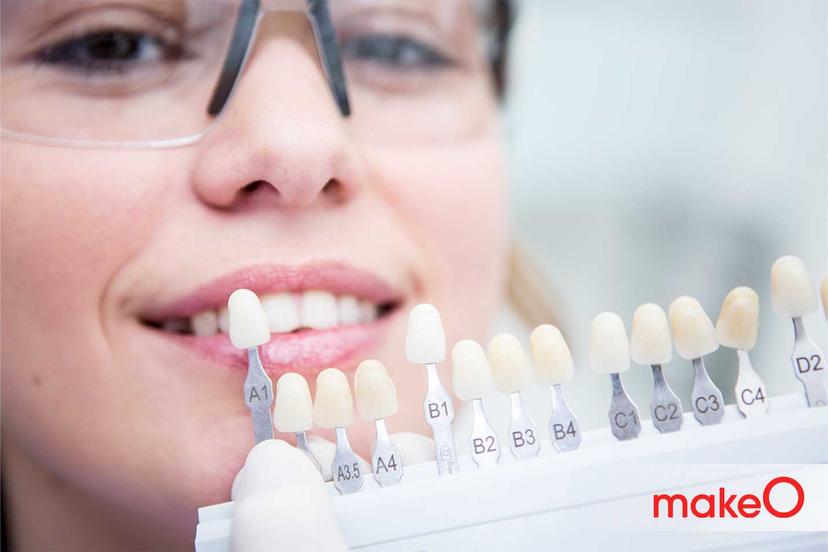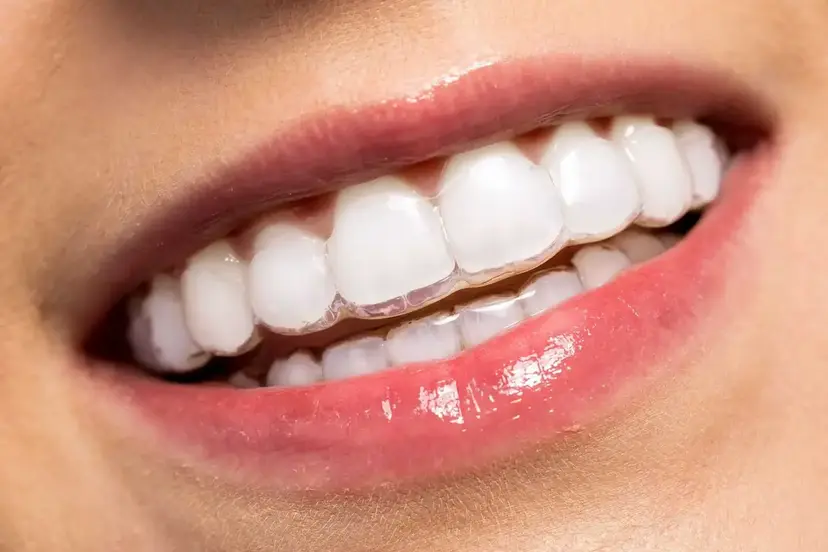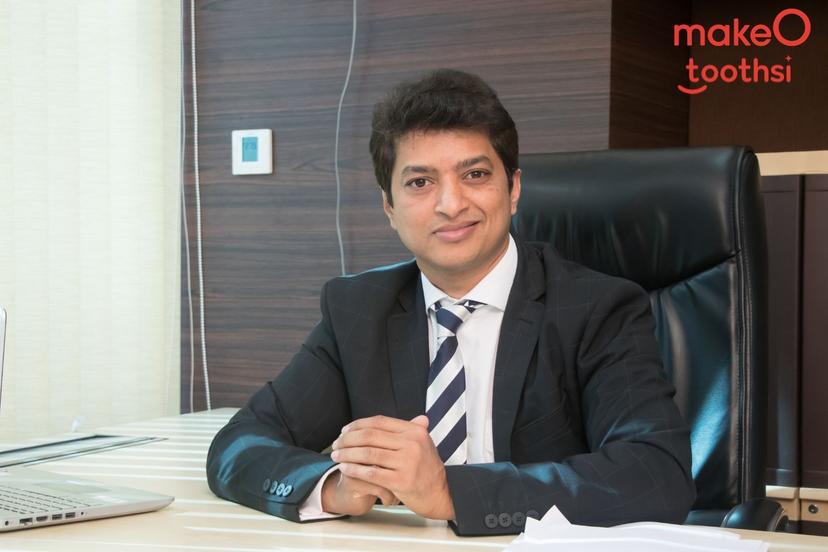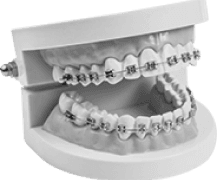MakeO blog
Orthodontics is evolving rapidly, combining trusted methods with modern technology like 3D printing to deliver precise and personalised care.
Among the various orthodontics options for straightening the teeth and correcting bite issues, several types of braces and aligners are available depending on the different needs:
1. Metallic Dental Braces – Conventional metallic braces that are durable. They remain a popular choice for children and teenagers due to their strength and effectiveness.
2. Ceramic Braces – Braces made to match the colour of your teeth, making them less noticeable while still providing an attractive and effective solution.
3. Self-Ligating Braces – Braces with special clips instead of rubber bands. These braces allow for quicker and easier adjustments during the treatment.
4. Lingual Braces – Braces placed discreetly behind the teeth. They are ideal for individuals seeking a hidden orthodontic solution.
5. Clear Aligners – Transparent, removable trays that are customised for a comfortable fit. They offer a nearly invisible alternative to traditional braces for teeth alignment.
With 3D printing, these treatments are even more precise and effective, helping patients feel more comfortable while achieving great results.
In this blog, we’ll explore how 3D printing orthodontics enhances braces and aligners, revolutionises treatment with precision and efficiency, and shapes the future of orthodontics with emerging trends.
The Role of 3D Printing in Modern Orthodontics
3D printing plays a big role in making braces and aligners more effective and comfortable. It helps orthodontists create custom-made braces and aligners that fit each person's teeth perfectly.
Unlike conventional orthodontic treatment, 3D-printed orthodontic treatment fits better and is more comfortable because it’s custom-made for your teeth. The treatment is faster, more accurate, and provides better results.
3D-Printed Braces:
In traditional braces, small brackets are placed on teeth and connected with wires to help straighten them. With 3D printing, orthodontists can design and create these brackets using digital models that fit each patient’s teeth perfectly. These are also called light-force braces because of their lightweight and they are custom-made which allows for a more accurate and comfortable fit. The best part is that 3D printing can quickly make new designs, which speeds up the process of improving 3D braces and testing new ideas.
3D-Printed Aligners:
Aligners are clear trays that straighten teeth, and 3D printing helps make these aligners more accurate. Orthodontists use digital scans of a patient’s mouth to design aligners that fit better and work faster. 3D printing allows for the fabrication of these clear trays with high precision, so they fit perfectly and are more comfortable to wear. The material used for 3D-printed teeth aligners is also stronger and more flexible than older methods, which helps in giving better results.
The procedure begins with digital scanning to create a detailed map of the teeth. Specialized software designs a custom treatment plan, showing how the teeth will gradually shift. Then, 3D printers produce the aligners, ensuring a precise fit.
3D printing is improving how braces and aligners are made, making the process faster, more accurate, and more comfortable for patients.
How 3D Printing is Redefining Treatment- Benefits over Conventional Treatment?
3D imaging orthodontics is transforming the way dental treatments are planned and carried out, offering more efficient and precise care for patients compared to conventional methods.
- Treatment Planning and Visualisation: Unlike traditional approaches, advanced scanning and imaging allows dentists to plan and create highly detailed 3D models of your teeth and jaw. These models provide an in-depth see view of your oral structure, enabling dentists to plan treatments with greater accuracy, making complex treatments more manageable and less uncomfortable for the patient.
- Customisation and Precision: Conventional dental procedures may not be customised for patients at all stages of treatment. One of the most significant benefits of 3D printing is its ability to create custom dental solutions. Whether it is crowns, braces, dental retainers or other dental tools, 3D printing allows dentists to make designs that are made just for you. Using state-of-the-art digital scanners and 3D printing technology, dentists can make perfect-fitting devices like aligners or crowns that offer superior comfort and effectiveness.
- Speed and Efficiency: Traditional dental procedures can be time-consuming. However, 3D printing accelerates dental treatments. Normally, dental procedures can take a while, but 3D printing speeds up the process. With this technology, dental models and devices can be created rapidly, reducing the treatment time and minimizing the wait time for the patients. It also helps minimise errors and lowers costs, making dental care easier and more affordable.
- Enhanced Comfort and Satisfaction: By creating highly personalised dental devices, 3D printing ensures better-fitting, more comfortable treatments. This leads to higher patient satisfaction as compared to conventional dental treatments, as treatments are not only more effective but also more pleasant to experience.
3D printing is redefining dental care by enhancing accuracy, accelerating treatments, and offering personalised solutions, thereby improving the overall patient experience.
Emerging Technologies: AI and Smart Sensors 3D printing is changing the way orthodontics works, bringing new and exciting ideas for better treatments. These advancements include the integration of smart sensors, LED light-equipped brackets, and Artificial Intelligence (AI), which are transforming how orthodontic treatments are planned and executed. Here they are discussed briefly:
- Smart Sensors in 3D-Printed Braces and Retainers: Small sensors embedded in 3D-printed braces and retainers monitor patient compliance with treatment plans, track sleep disturbances, and measure jaw movement. This real-time data allows orthodontists to make timely and accurate adjustments, ensuring more effective treatment outcomes.
- LED Light and Battery-Integrated Brackets: 3D-printed orthodontic brackets featuring LED lights and tiny batteries show potential for accelerating bone healing. While still under research, this technology could promote better bone growth, enhancing the effectiveness of treatments.
- Artificial Intelligence in Treatment Planning: AI tools help predict the effectiveness of treatments and create personalized plans for patients, increasing the speed and accuracy of orthodontic care.
As 3D printing evolves, orthodontic treatments are becoming faster, more effective, and personalized. The combination of 3D printing, AI, and smart sensors ensures highly customized, accurate, and comfortable treatments. Real-time data allows orthodontists to fine-tune treatments for optimal results. Consult with your orthodontist to explore how 3D printing can optimize your treatment.
Conclusion
3D printing is transforming orthodontics by making treatments more precise, comfortable, and faster. It allows for the creation of custom braces and aligners that improve dental care while reducing time and costs. Emerging innovations such as AI integration and smart sensors, further expand its potential. As 3D printing continues to evolve, it will continue to enhance dental treatments and improve patient outcomes.
FAQs
1. What if my aligners do not fit properly?
If you feel the fit of your aligners is not right, consult with your dentist. Since they are custom-made using 3D scanning and printing, adjustments can be made quickly to ensure a better fit.
2. Can I get my aligners without visiting the dentist too many times?
Yes! With 3D scanning technology, a detailed scan of your teeth can be taken at home, using which you can be planned by an orthodontist and your custom-made aligners sent directly to you, minimising the need for frequent visits.4 There are a lot of online aligner brands available which offer service including makeO Toothsi, which is known for its advanced technology and professional support. Choosing the right one is key.
3. How long will it take to get my aligner braces after my first visit?
You can get your first set of aligners within 1-2 weeks. Once they take the 3D scan of your teeth, your aligners are sent for processing through advanced 3D printing technology.
4. How do I know if my aligners are working?
You’ll notice the gradual movement of your teeth over time. 3D technology allows your dentist to predict how your teeth will shift, so your aligners will be tailored to help you achieve your desired results.
5. Can I take out my aligner braces whenever I want?
Yes, aligners are removable. Before you eat or when you want to brush your teeth, you can take them out. Thanks to 3D printing, the aligners are lightweight and fit securely in your mouth, so you do not have to worry about them falling out. But remember, for effective treatment, you must ensure to wear your aligners for at least 22 hours/day.
6. How fast can I see results with aligners?
You may start seeing results within a few weeks, as the 3D printing process ensures your aligners fit perfectly and work effectively to move your teeth.
7. How should I maintain my 3D-printed aligners?
To maintain your 3D-printed aligners, clean them regularly with lukewarm water and a soft toothbrush. Avoid using toothpaste, which can scratch the aligners. Additionally, store them in a case when not in use to prevent damage.
related categories
Related articles

This Diwali, Smile Bright With makeO Teeth Whitening Kit

Types of Braces: Removable vs Fixed Braces, Which is Right For You?

Dr. Pravin Shetty: Pioneer in Lingual Orthodontics & Innovative Smile Solutions
How do I Know I’m the Right Candidate for makeO toothsi Teeth Aligners?

